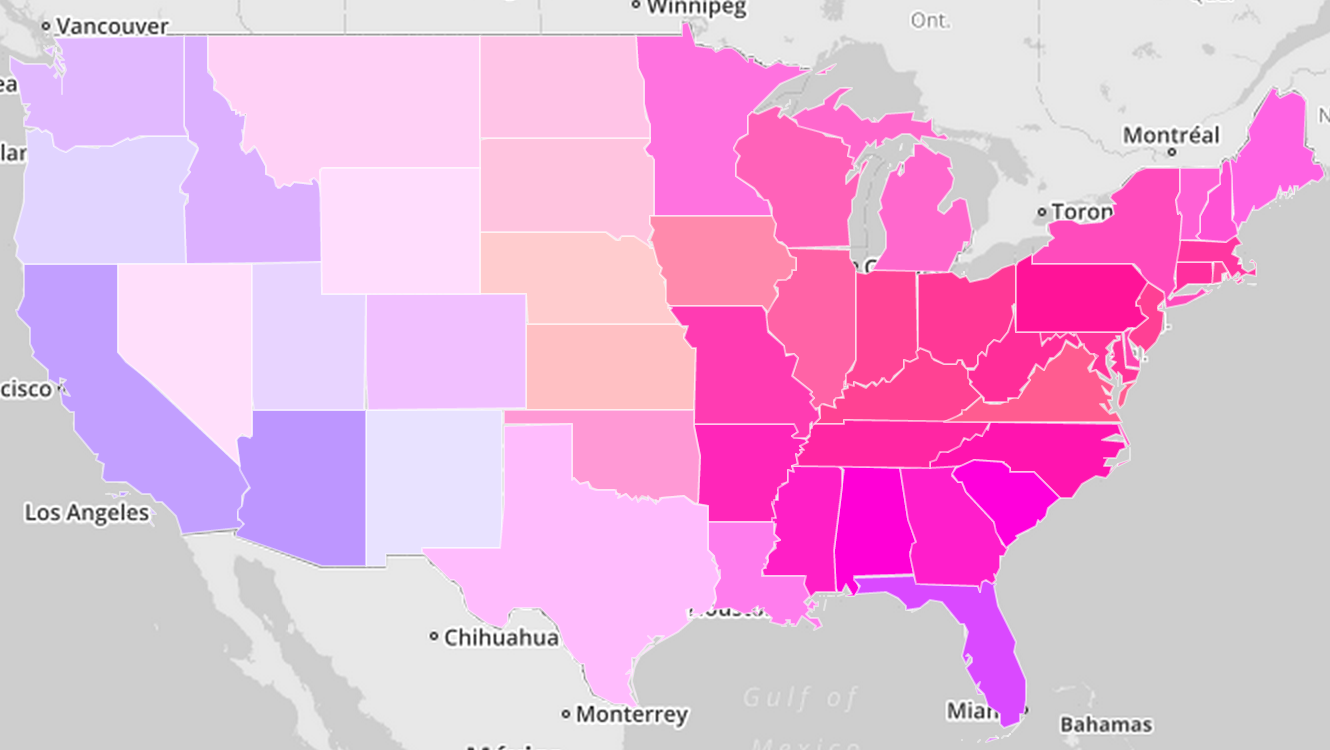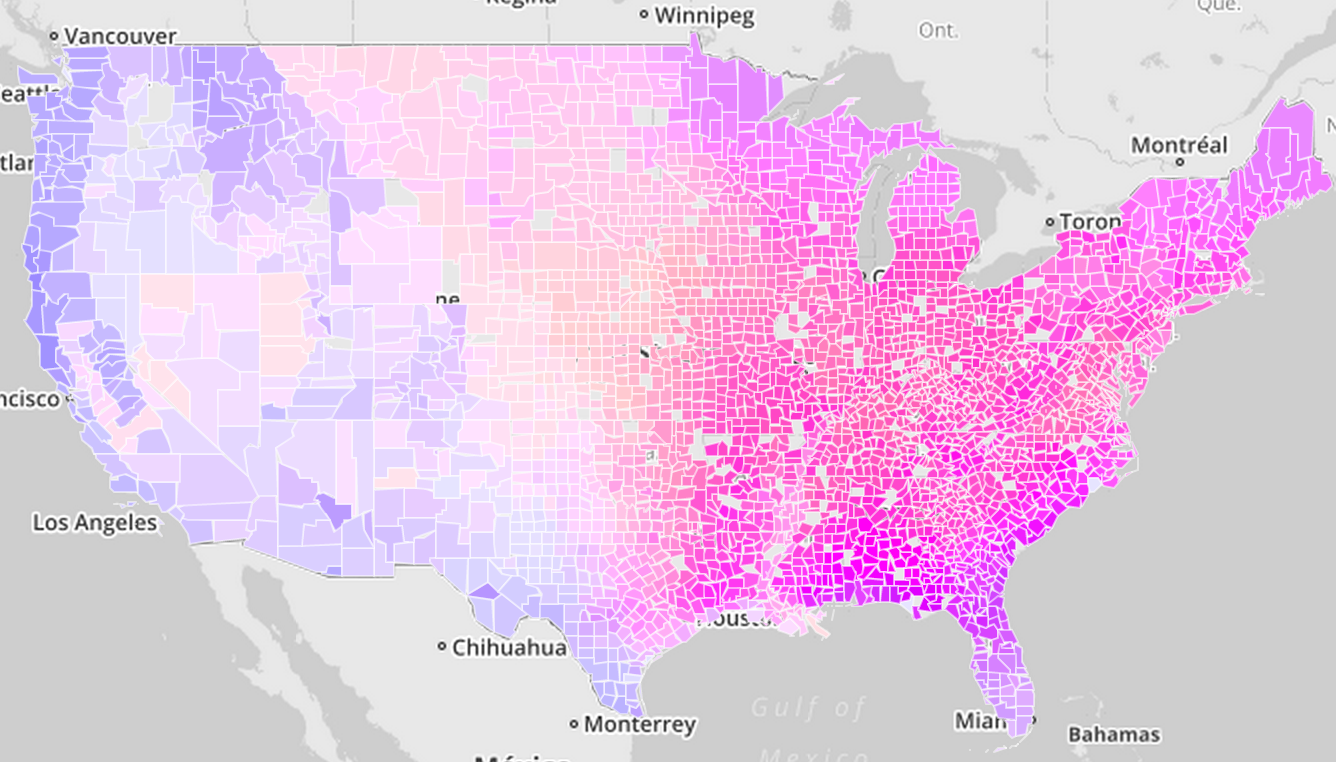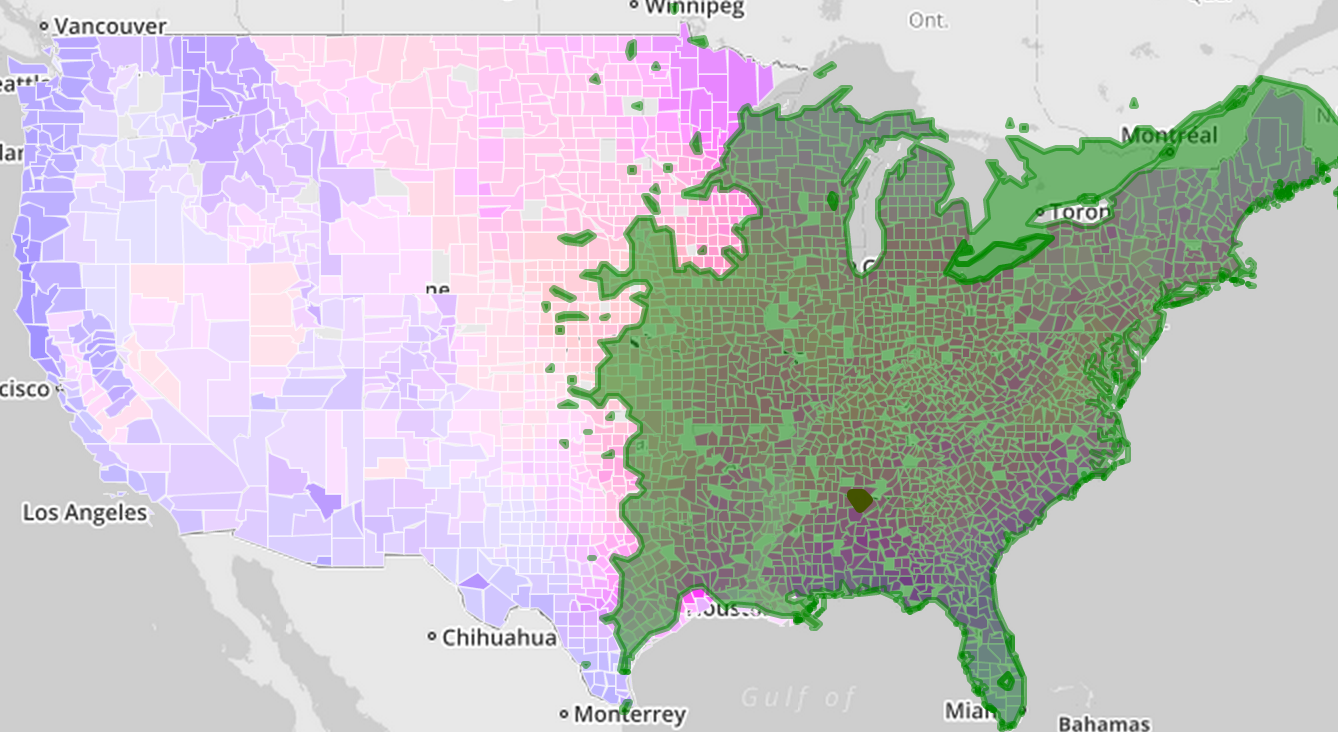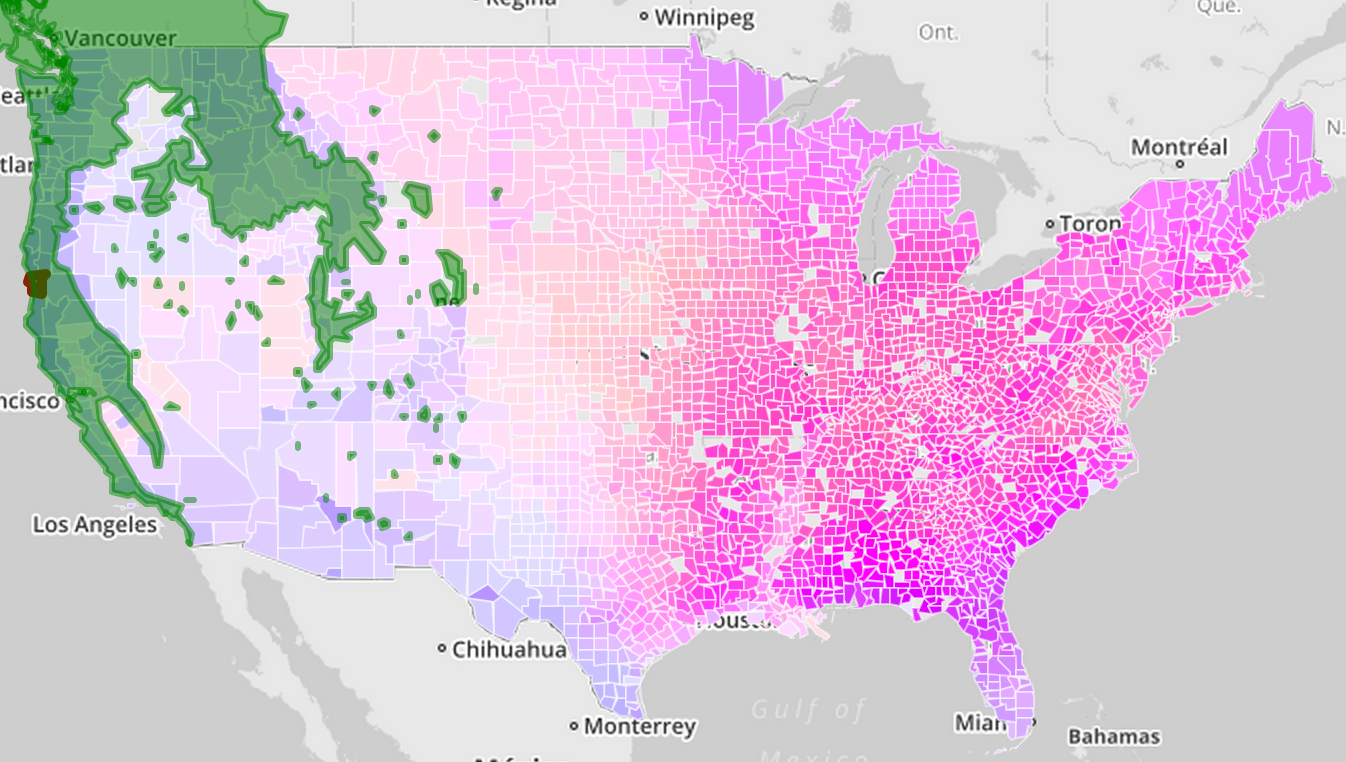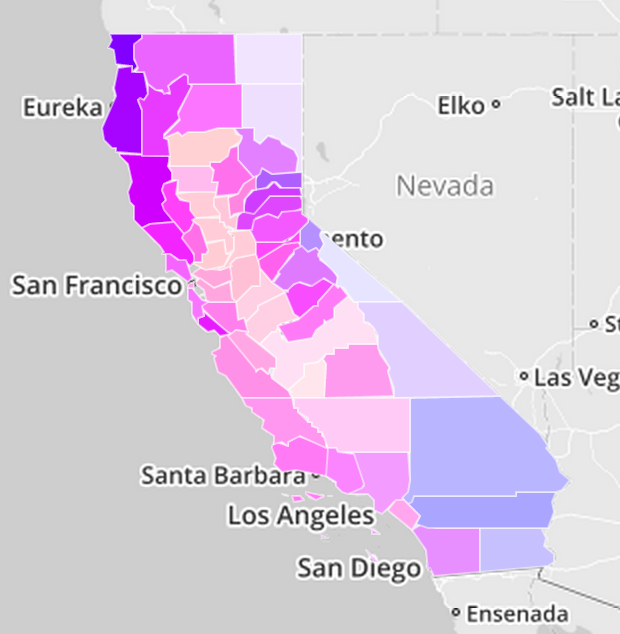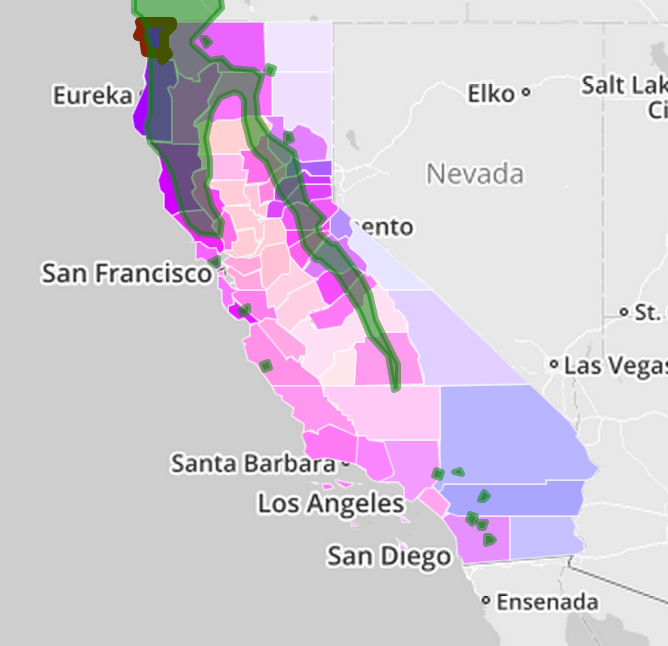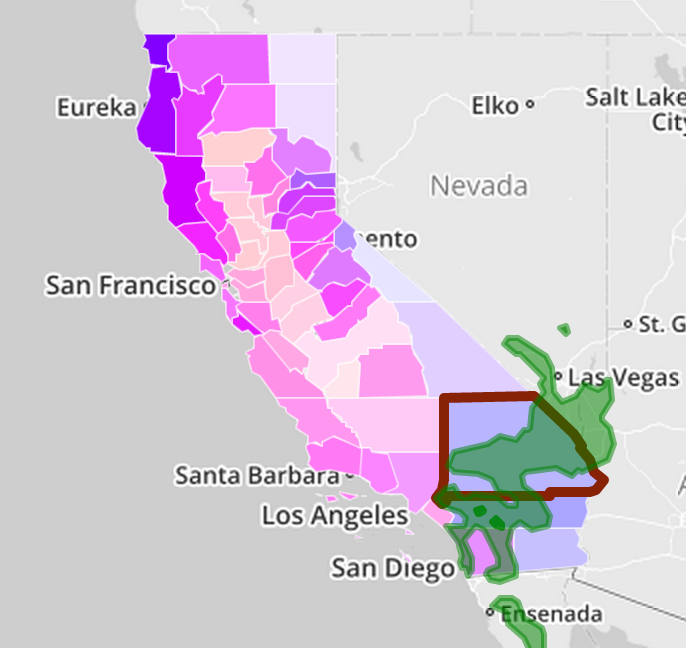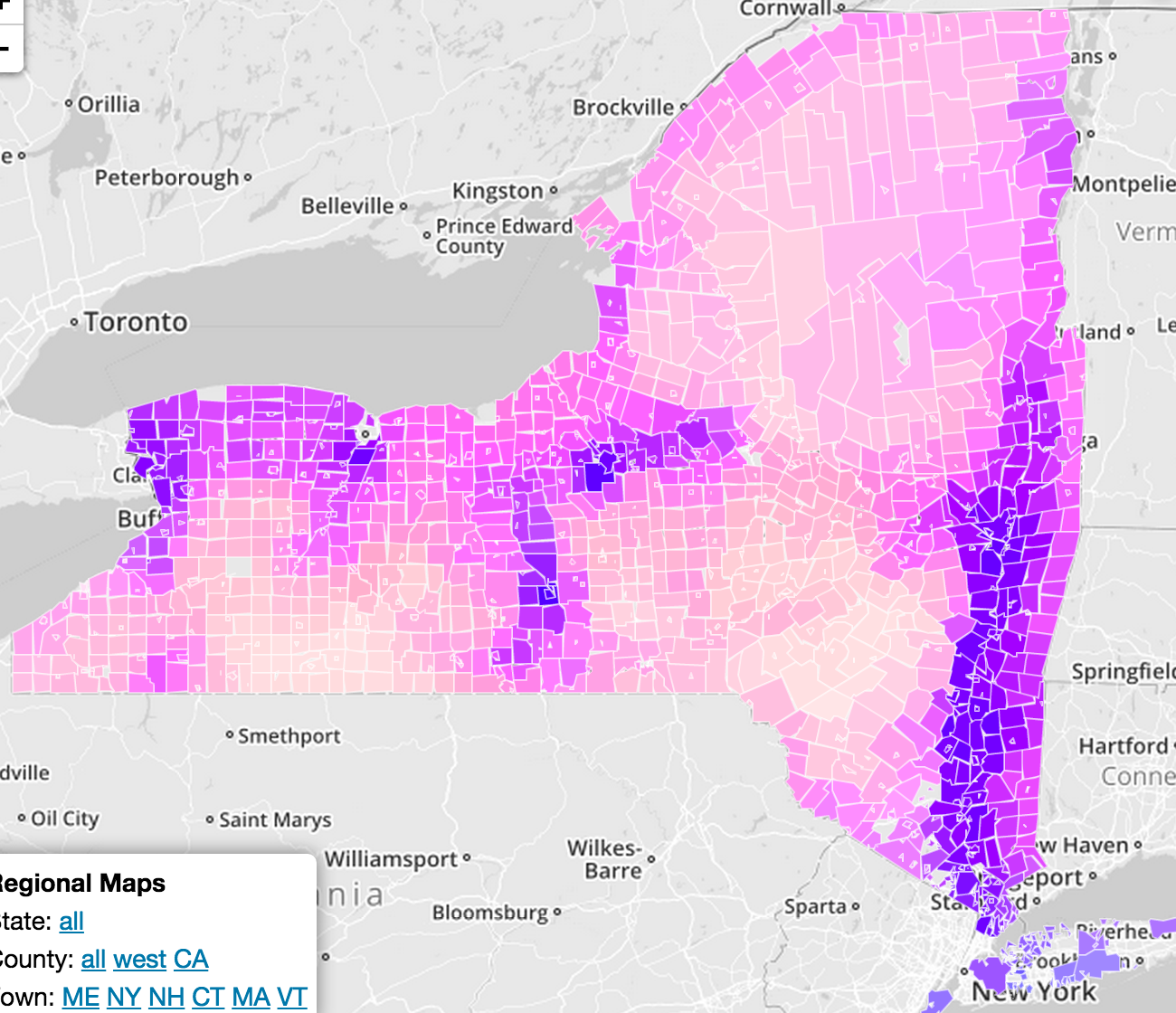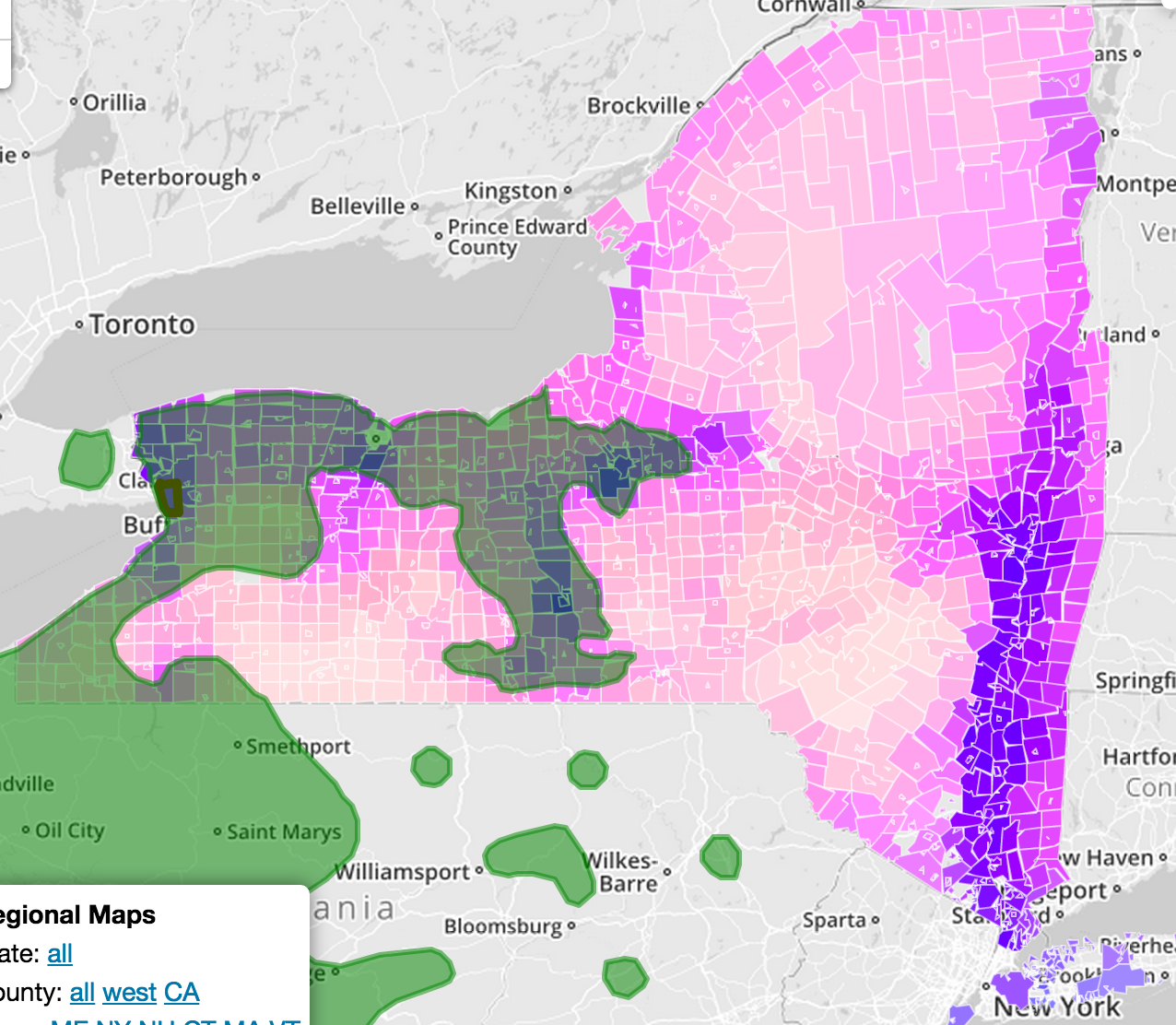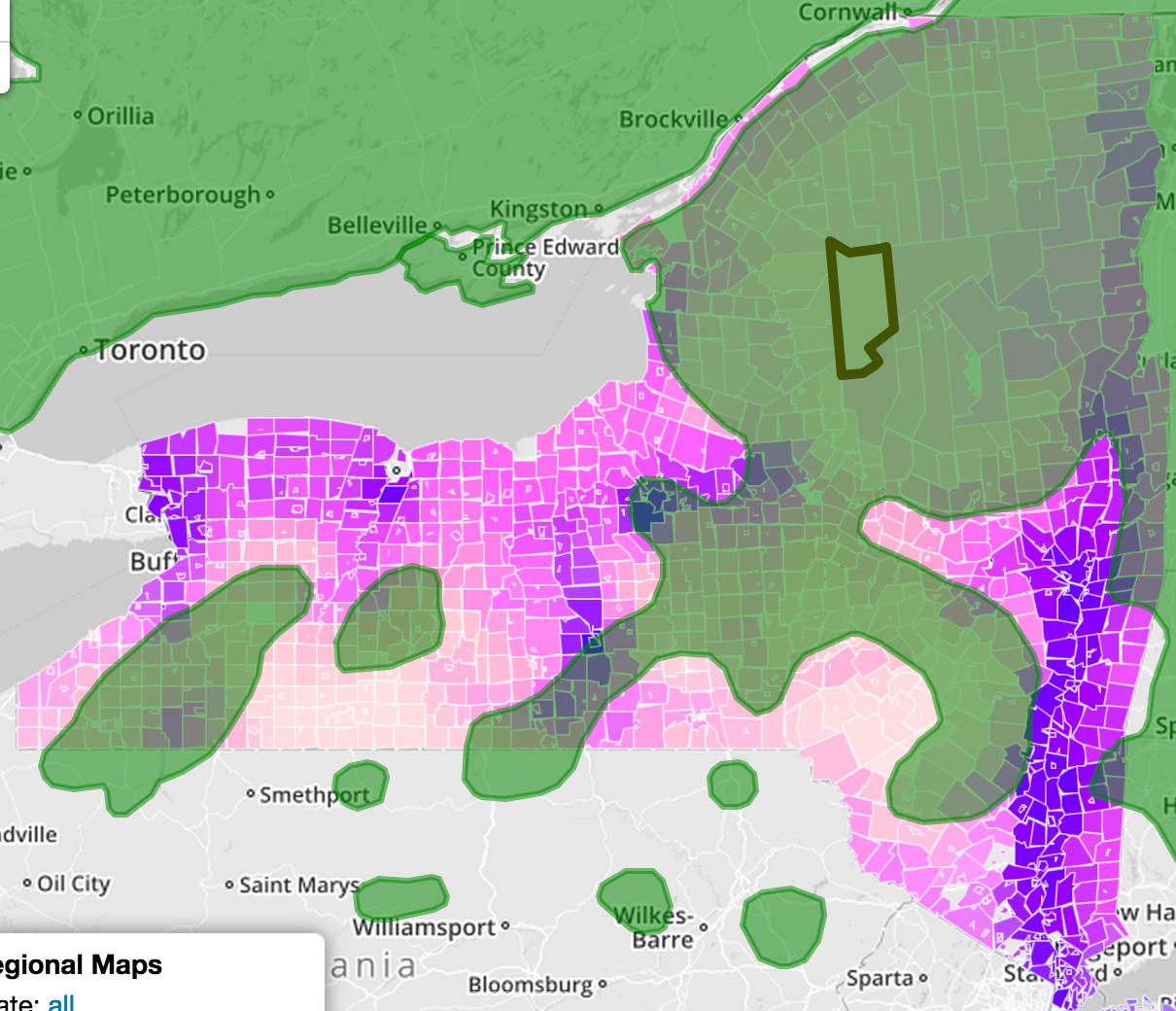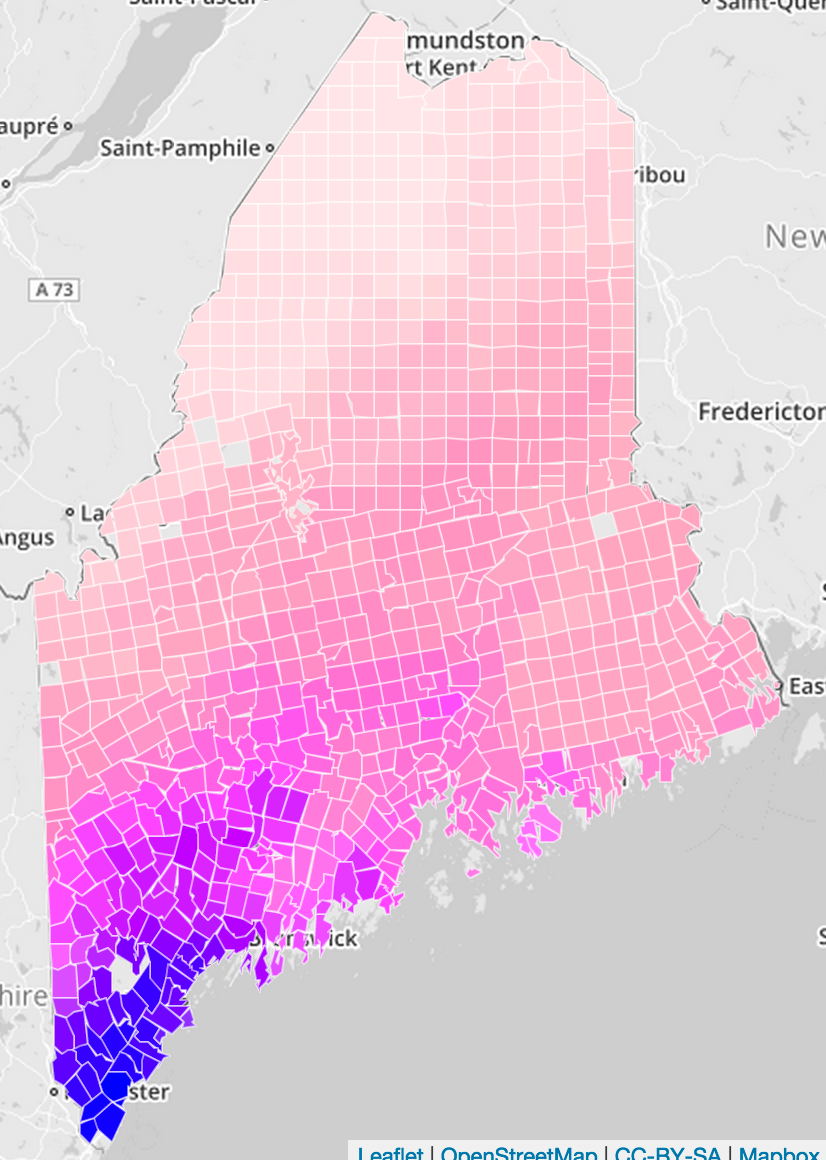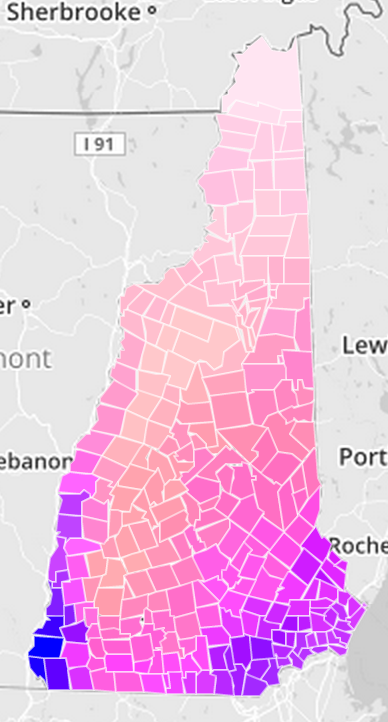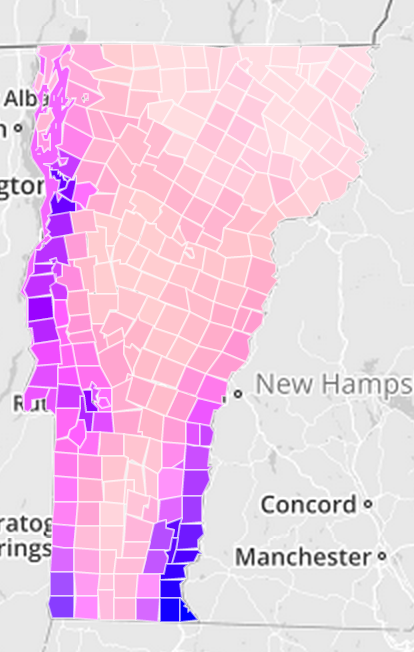This is an exploration of US geographies based on the distribution of North American tree species, based on a data visualization I created. The construction of the visualization is detailed here.
Background | US States | US Counties | California | New York | Other Northeast
Background (top)
The visualization was constructed from two data sets: range maps for 678 North American tree species, and location maps for various US geographies (states, counties, townships). The visualization displays which tree species are prevalent in different geographies of the continent.
Regions are colored according to the number and uniqueness of tree species they contain:
- Darker regions have more trees, lighter regions have fewer trees.
- Blue regions have, on average, more unique trees (trees that are found in fewer regions). Red regions have trees that are more common.
fewer more
species species
mostly unique species
average uniqueness
mostly common species
US States (top)
|
In this view we see there are many more tree species east of the Mississippi. Tree species are counted at the geographic center of each location, so for example a state like California is undercounted because its center lies in its arid Central Valley. We also see that most tree species are common to the broad plains, forests, and low mountains of the Mississippi Basin. West of the Mississippi we have a fewer number of common species, transitioning gradually across the Great Plains to more unique species past the Rocky Mountains. The extreme northeast and southeast regions of the contiguous United States have more distinct species, particularly Florida which is almost as unique as California. Finally, remember that the states and counties in the east are smaller, and the common-ness metric is not a function of range area but rather the number of regions it spans. So assuming an even distribution of tree range sizes, we should expect eastern states to have more common trees. |
|
US Counties (top)
|
Using smaller geographic regions gives us a better look into the underlying physiography. We see the most common trees are found near the Mississippi River and Appalachian Mountains, and that distinct regions west of the Sierra Nevadas and in the Northern Rockies contain a larger number of unique species. |
|
|
|
Displayed here are the ranges of two species that exemplify this divide: the American elder: |
|
|
|
And the Pacific willow: |
|
California (top)
|
Narrowing our view to the counties of California reveals the sharp divide between the Sierra Nevada mountains, the Central Valley, the coastal ranges, and southeast deserts. |
|
|
For example, here we see the range of the Pacific dogwood: |
|
|
And here the Mohave yucca: |
|
New York (top)
|
A per-town view of New York lets us see the varied topography of New York. We see many species along the Hudson River and near the lake regions, and deserts in the Allegheny region, the Catskills, and the Adirondacks. One unexpected feature, to me at least, is the vertical strip in the center of the Allegheny Plateau, running straight through Ithaca and the Cayuga Lake valley. Another is the slightly higher number of species along the Saint Lawrence River. Data is sparse for Long Island towns. We can also see in the New York view an interesting pattern, opposite to that of California - counties with many tree species also have more unique species, and counties with fewer species have more common species. This implies that the majority of the state is covered by a few common species that thrive everywhere, and a few regions have specialized species. For New York, these regions are the lowlands along the Hudson River and Lake Ontario. |
|
|
One example of a more specialized species is the cucumber tree, or blue magnolia, that grows close to the Great Lakes and down into the center of the Allegheny Plateau. |
|
|
And in the mountainous regions, indeed the prevailing species span the whole state, such as the silver maple and the yellow birch. Of course there are some species that only cover these regions, such as the balsam fir pictured to the right. |
|
Other Northeast (top)
|
|
